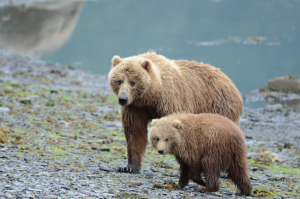
Happy New Year! Time flies, doesn’t it? I feel as if I just wrote my 2018 New Year’s post. Since I post my resolutions on my blog, I can’t pretend at the end of the year to forget what resolutions I made in January. A quick look back at last year’s post reminded me I did not finish as many writing projects as I’d planned.
I work hard to be a successful author, but as an author, I must wear many hats. On my best days, I’m able to sit down and work on my novel, and on my worst days, I spend my time promoting my books, my website, or my mystery newsletters. I couldn’t have known a year ago how much time I would spend in the coming year working on promotion and on building my author platform, and the more time I spend on promotion, the less time I have available to write. It’s a trade-off, and usually, I choose writing, but during the last few months, I decided to get serious about my author business.
Although my next novel, Karluk Bones, is not yet ready to send to my publisher, I finished the rough draft this past week. I resolve to send Karluk Bones to my publisher by late spring and have it in the hands of readers by late summer or early fall. I know how long it takes to edit and publish a novel, so this seems like a reasonable resolution.
My second resolution is a promise to myself to finish editing my wildlife book and get it published and to market by the end of the year. I made this same resolution last year and didn’t accomplish it, but I hope 2019 will be different. My wildlife book requires extra time and energy in every facet of the writing and editing process. I know the book will never be perfect, but I want to do the best job I can on it, and I hope it will be worth the wait.
Karluk Bones and The Wildlife of Kodiak Island will be my two be my two main writing projects for 2019, but I hope to begin my next novel sometime this coming spring or summer. I already have a rough idea for the plot, and I would love to start writing it now. My next planned non-fiction book will be a compilation of my true stories of murder from Alaska. These are the tales I write every month for my Mystery Newsletter, and I have more than enough compiled for a book.
I’d better stop before I promise too much. I plan to remain active in The Reader’s and Writer’s Book Club, and I hope to write more articles for True Crime: Case Files and Medium. I also want to leave enough time in my schedule to explore other opportunities I discover.
I haven’t written a wildlife post in several weeks, but I’m returning to fish and will write about rockfish over the next few weeks. Thank you for reading my posts this past year, and I hope you will stay with me through 2019.
Happy New Year, I wish you health, happiness, and prosperity!

Robin Barefield is the author of three Alaska wilderness mystery novels, Big Game, Murder Over Kodiak, and The Fisherman’s Daughter. To download a free copy of one of her novels, watch her webinar about how she became an author and why she writes Alaska wilderness mysteries. Also, sign up below to subscribe to her free, monthly newsletter on true murder and mystery in Alaska.



 As many of you know, my husband and I own a small wilderness lodge on Kodiak Island, Alaska. In the summer, we take guests wildlife viewing and sportfishing, with an emphasis on watching Kodiak bears in their natural habitat. One thing I have noticed over the years is the guests who have the best time at our lodge are those who see everything. They are
As many of you know, my husband and I own a small wilderness lodge on Kodiak Island, Alaska. In the summer, we take guests wildlife viewing and sportfishing, with an emphasis on watching Kodiak bears in their natural habitat. One thing I have noticed over the years is the guests who have the best time at our lodge are those who see everything. They are  the ones who show me their photos at the end of the day and are embarrassed by all the images of rock formations they snapped. They are also the ones who admit they didn’t take any pictures of the whales because they just wanted to look, listen, smell, and feel the experience instead of watching it all through their camera’s viewfinder.
the ones who show me their photos at the end of the day and are embarrassed by all the images of rock formations they snapped. They are also the ones who admit they didn’t take any pictures of the whales because they just wanted to look, listen, smell, and feel the experience instead of watching it all through their camera’s viewfinder.
 No matter where you travel or what adventure you seek, if you narrow your focus too much, you will miss what is right in front of you. Instead, look around, and you might be surprised by what you see. The things that please you most and makes you fall in love with a destination could be something entirely different from what you were expecting.
No matter where you travel or what adventure you seek, if you narrow your focus too much, you will miss what is right in front of you. Instead, look around, and you might be surprised by what you see. The things that please you most and makes you fall in love with a destination could be something entirely different from what you were expecting.








